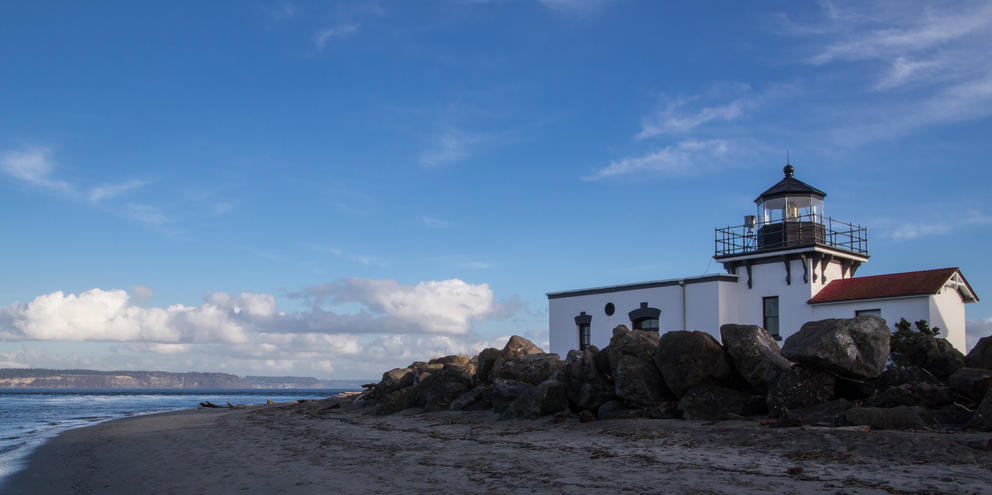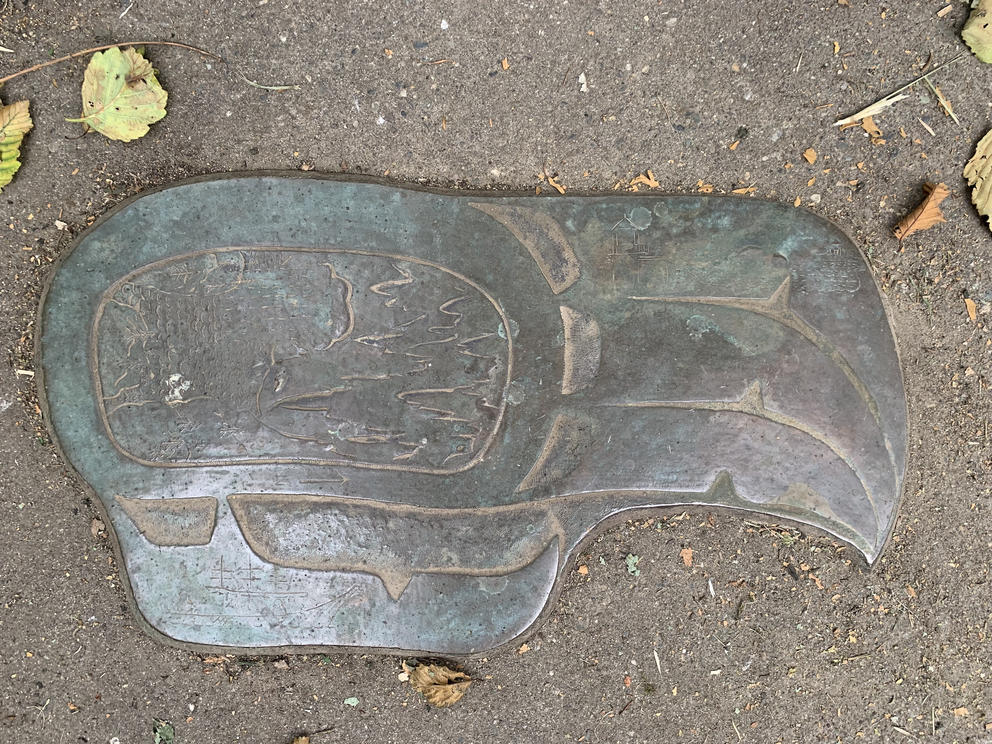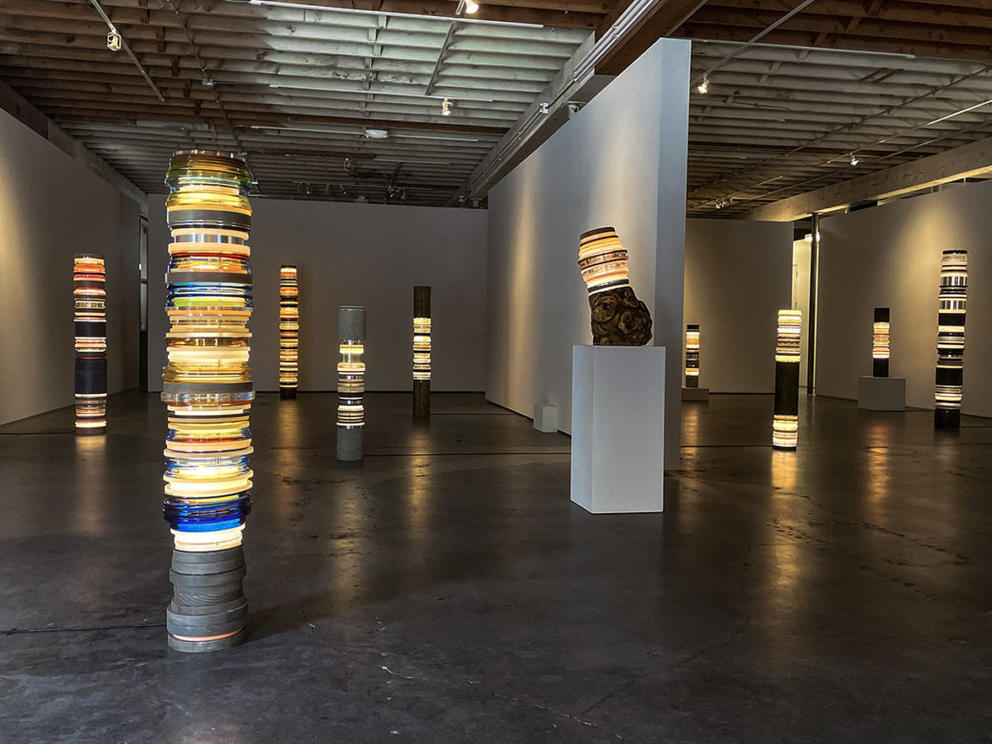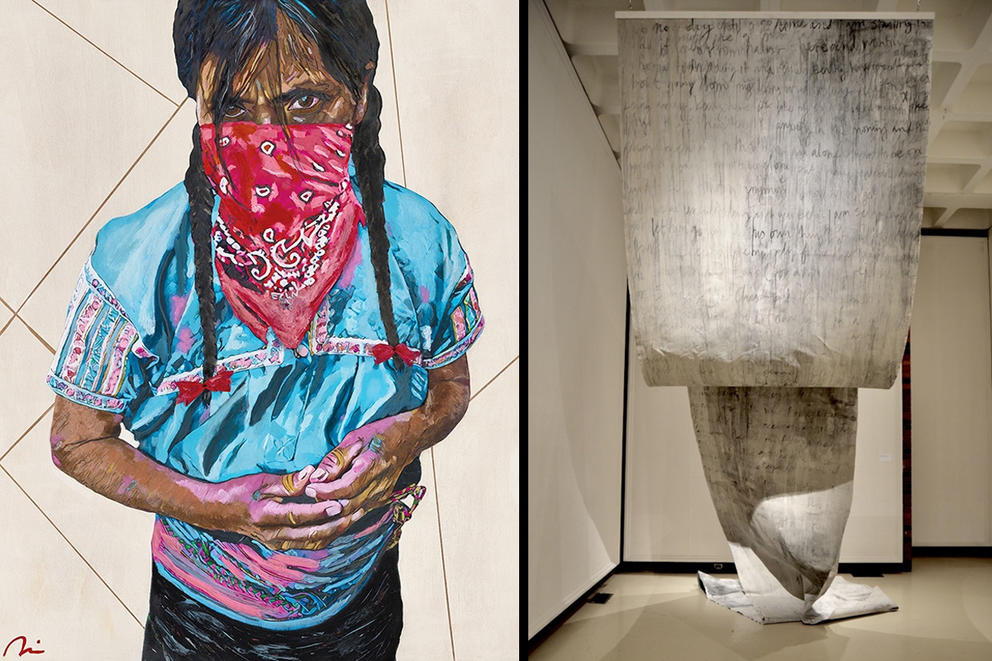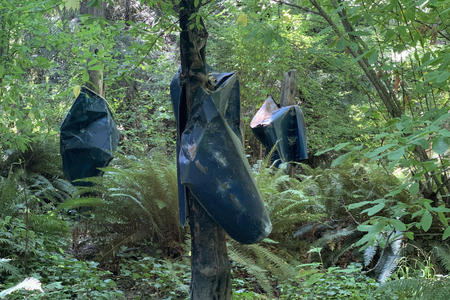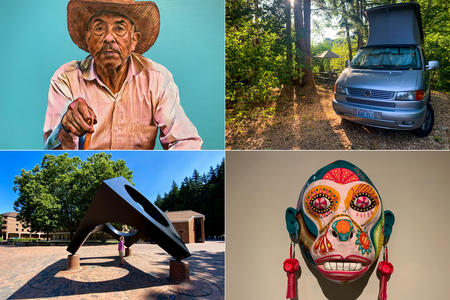Regular readers know I’ve been doing a lot of weekend road trips this summer, heading out in search of art in places like Deception Pass, the Olympic Peninsula and, as I wrote about in Crosscut this week, a whirlwind journey through Edmonds, Everett, Tulalip, Edison, Bellingham and La Conner. But the trip to Point No Point was just supposed to be a day at the beach.
ArtSEA: Notes on Northwest Culture is Crosscut’s weekly arts & culture newsletter.
The picturesque Point No Point Lighthouse, built in 1879 at the northern tip of the Kitsap Peninsula, is Puget Sound’s oldest lighthouse in continuous operation. Named by another cranky mariner (see Cape Disappointment, Useless Bay, etc.), the area was known by the Indigenous S’Klallam inhabitants as Hahd-skus, meaning long nose. In 1855, the spit was the spot where the S’Klallam, Chimicum and Skokomish tribes signed the Treaty of Point No Point, ceding land to the Washington Territory.
The beach there is Pacific Northwest perfect, with a view of Mount Rainier, eagles in the sky, agates on the shore and driftwood forts on the sand. I was on the trail just inland, where I saw the mysterious art object on the ground, near a seemingly unrelated bench. Set into a square of concrete and surrounded by brambles, it appeared to be a bronze or brass relief — turned slightly green with oxidation — the size of the sole of a large shoe.
The shape echoed traditional Coast Salish design, with trigons and elongated crescents, and a large ovoid, typical of formline design based farther north. It also resembled the Seahawk logo, or more accurately, the Indigenous eagle design on which the team logo was modeled.
But inside the graphic lines were several tiny etchings — scenes that nod to the layered history of this place: a rainy forested landscape, a long-snouted Coast Salish canoe encountering a three-masted ship, the lighthouse beacon. It was like a little treasure map with no words, only the N of a directional arrow.
I figured I could dig up more info online when I got home, but haven’t found a mention or photo anywhere. (When I did a reverse image search, Google suggested it might be an ax head, an old boot heel or a stamped Scottish brick.)
I did find someone’s collection of fishing license tabs from the area, bearing a somewhat similar eagle image. I haven’t had any luck with the Kitsap Parks Department yet, but perhaps the Point No Point Treaty Council knows something. And maybe it’s okay just to enjoy the mystery.
The piece may not be particularly old, or “of note,” but it sparks the same curiosity I have for any intriguing art object: Who made it and what compelled them to do so?
Editor’s note: find the answer to the mystery in the follow-up newsletter.
Lighthouse beacons were on my mind again this week when I visited a new show of “light stack sculptures” by Los Angeles architect and artist Matt Gagnon. In Imaginary Artifacts (at Winston Wächter Gallery through Sept. 18), the raw space of the gallery becomes a foreign landscape waymarked with tall columns lit from within.
Gagnon makes these evocative objects by stacking circles of varying thickness and material — handblown glass, colored acrylic lenses, concrete, dyed ash, burnt pine, aluminum, a mulberry stump — in different orders and heights. In his artist statement, he explains that he makes “incessant additions and subtractions” in his effort to mine “the emotional frequencies of color, material and texture.”
There is an emotional resonance in this forest of strange and glowing trees, whose rings are stacked instead of concentric. They reminded me of those images from DNA sequencing of the human genome — stacks in which each different color plays a key role in the complete picture.
In the same sense, different aspects of these art objects shine brighter, depending on the viewer’s stance — here a soft pink soothes, there a wood stump grounds. These “symbols of our pasts, our travels, our memories” seem especially relevant in this cultural moment, as we’re all looking for guidance — maybe even some “imagined artifact” in the woods — that will help us navigate rocky shores ahead.
Art reflects the world back to us through a lens of a different warp. That’s evident in the local shows popping up that address our current state of uncertainty and trepidation, the sense that this is a turning point, but toward what?
Just look at the themes: In Here, at studio e gallery in Georgetown (through Sept. 11), a group show of works exploring the boundaries between interior spaces and outdoors (is it safe out there yet?); New Territory, at Patricia Rovzar Gallery downtown (through Aug. 26), featuring Seattle artist Alicia Tormey’s burbling encaustic paintings that resound with “significant life changes amidst a pandemic”; and Columbia City Gallery spells it out for us with Shifting Tides: Art That Speaks to Our Ever Changing Times (through Sept. 19).
This last show offers a rich range of local work, juried by June Sekiguchi, Asia Tail and Inye Wokoma. I love the defiant gaze of Nico Inzerella’s “Resistencia” and the hopeful pop of Bella Kim’s recycled-plastic quilt, “A Dream of Spring” (both artists who I first learned about during my road trip to the Schack Art Gallery in Everett). And Lindsay Peyton’s extra-large painting, from her “Dislocation” series, leaves the wall to becomes a landscape in itself — a canvas curtain inscribed with water-soaked text, personal history and memories, looking as if it’s been out on a windy bluff just waiting for someone to decipher it.
Get the latest in local arts and culture
This weekly newsletter brings arts news and cultural events straight to your inbox.

